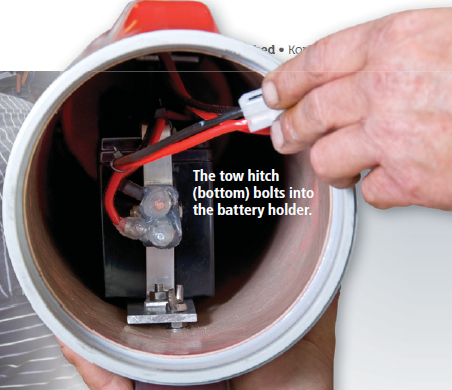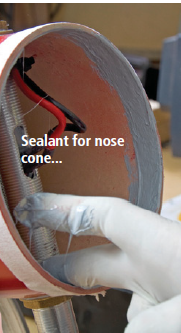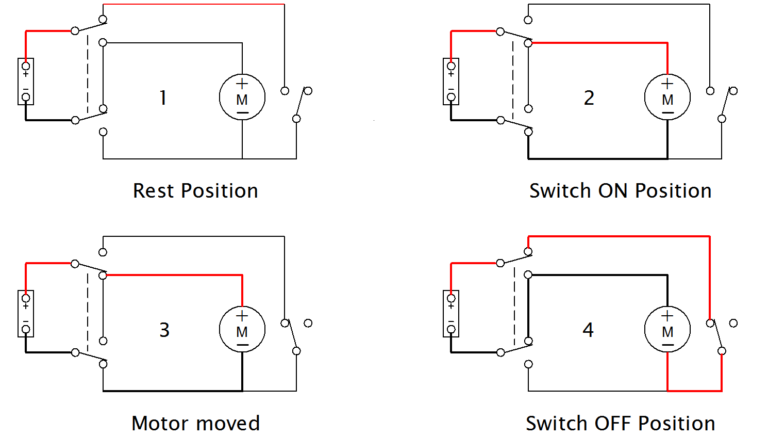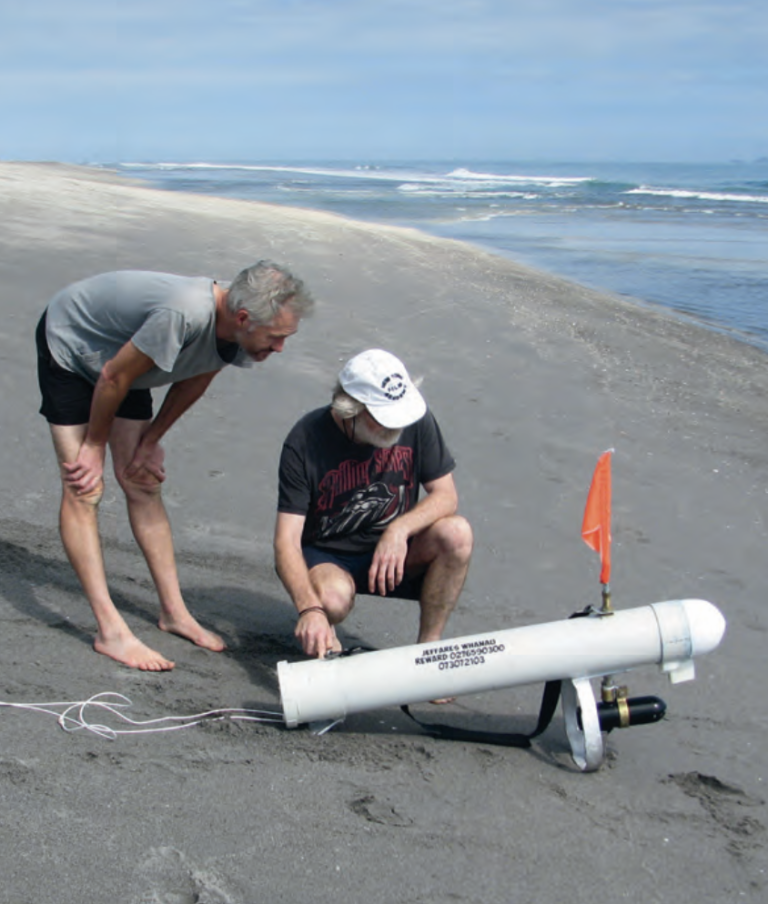A Kiwi makes a classic DIY kit
by Graeme Pedersen
There are several New Zealand- designed and created fishing kontikis on the market but when I thought about having one, I wasn’t going to buy it.
I had the ability, so I did what any good Kiwi would do. I’m a qualified automotive engineer and always had an interest in electronics so decided I would make one myself.
It would have been a few years ago I guess when I began working on it.
I started off using existing computer chips, but the kontiki motor just kept working without stopping and that was hopeless.
That is when I advanced to programming. I studied as much as possible by myself and had a bit of one-on-one training from an electronics engineer. Along the way, I’ve destroyed many a chip and had smoke and flames and sparks, not so much with the timers because they are all low current but with the electric-winch speed controllers which run some pretty high amperages
Programming
I started with assembly language, because I can just get a microchip from the local corner dairy basically and the hard part of it was doing the programming. But you work it out and master it and you learn something along the way. Like riding a bike—after several failures you just get on with it and can do it. It’s no different with electronics.
It takes me a lot longer than it would someone who is university-qualified, but I get there. I’ve always been a big believer that you can pretty well master anything if you persist long enough, nothing’s impossible. If somebody comes along and says “That can’t be done,” you’ve released a monster. Yeah, then you’ve got to pretty much well prove that you can.
There wasn’t anything available in the kitset form at that time out there so I decided to do the basic concept of a motorised kontiki which always stays the same— streamlined nose, motor at the front and the line coming off the back. So, it was just a case of working round what was available to do that.
I came up with the proportions and dimensions of the 4 mm PVC tube by trial and error. The first one I threw together, using no aluminum but some old steel and a cheap motor that I stumbled across. It went out dead straight and I thought, this is good.
The second one was all precision but fell on its side. I figured the motor torque was turning the kontiki over as it was going out. The remedy, and what I have carried on doing, is to offset the batteries. Others making kontikis put a lump of lead on the side of the propeller guard. I couldn’t see the sense in adding weight as they are heavy enough to cart down to the beach, anyway.
My kontiki weighs 15 kg all-up. Depending on the weight of the total machine with batteries and everything else, you want it to float but you do not want it to bob around like a buoy on top of the water, so the less floatation the better.
Urethane sealant on handle bolt
Bayonet holds batteries offset in tube
Homemade
I get guys coming round here with their home-built kontikis that are not working well.
I say you need to get that lump of lead off the frontal guard and move those batteries to the left and they’ll find that works.
People also start off with a cheap, economy oven-type timer and will go through two or three of those before my phone goes and they want to buy an electronic one. The original leaks basically and the salt chews it to bits. If a guy is having trouble with his kontiki, he turns from the happiest guy in the world who just wants to have fun-time on the beach into the most difficult person ever born.
I am happy to sell pieces of kit and my whole kitset is entry level. Guys who may have purchased an expensive kontiki and lost it to a shark or snags think well they can get one of these, put it together themselves and if they lose it can still have enough left over to get another one. I try to make it easy and advise people who have never seen kontikis working or caught a fish in their life. It’s really good to be able to sell to people like that, they don’t have a million dollars but can afford to just get into it and so they are rapt. At least they can put a long line out and they’re going to catch a fish.
View fullsize
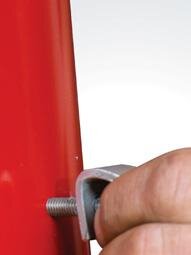
View fullsize
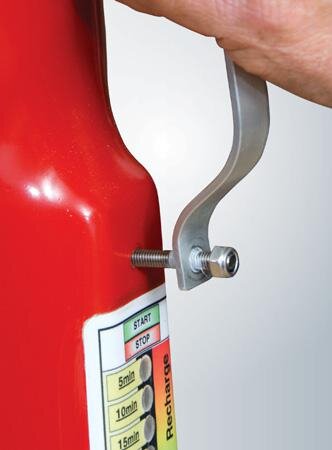
Checking internal diameter, keeping tube round…
Motors
I have spent a bit of time modifying and fishing with this model.
It can handle or go through anything, even rough seas with 2.5-metre waves when you should be at home mowing the lawn. The motor has 36 lb thrust, it’s reasonably heavy and holds the nose down. I’ve also got a 50 lb thrust motor which will go through anything the West Coast will throw at it.
I bring the odd shipment of motors in myself, but I also source them through a colleague who can manage to get them in cheaper than I do. The motor is powered by a three 12V 7.5Ah battery power unit. One of the unorthodox things I have done is the low battery cut-out; once the battery is discharged to the 80 percent mark, the motor will stop and that saves the batteries and the motor. The battery level is constantly being monitored while the motor is running.
The imported motor has an epoxy coating, not just a painted coating that would corrode quickly. Some manufacturers drill the holes to mount the propeller guard and the fins on them and as soon as you do that you’ve created a place for corrosion to enter.
View fullsize
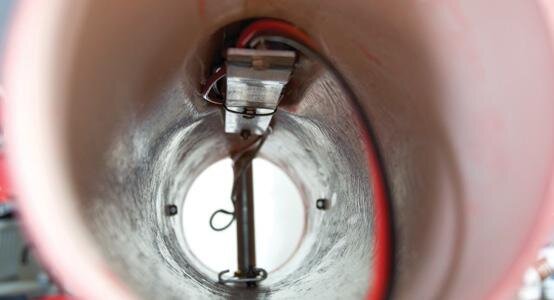
View fullsize
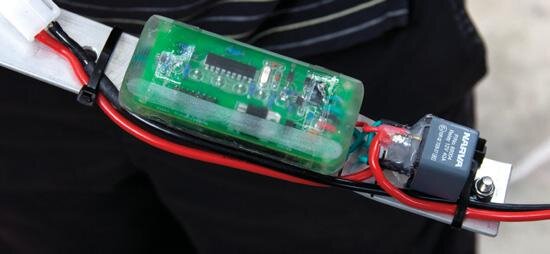
Lube the bolts to prevent seizing
Sealing
One of the most basic things with the kontiki is to keep the moisture out. It makes life a lot easier for sealing if you drill then tap the holes for the bolts and nuts because you want to ensure a good fit.
When you tighten them up, they also compress the plastic, ensuring a good seal. I use urethane as a sealant on everything although it ct can be messy. I use latex gloves to put it on, wearing two pairs, as I can always peel one off and still be protected with a clean pair underneath. I don’t like silicone rubber sealant which can peel off
Assembly
The first thing I do is put the handle on. It’s easier to do when there is nothing in there. It’s a matter of putting the long bolt through. I’ve tapped it 6 mm and it seals as you tighten the nuts up.
The handle also holds the timer assembly in place. In future, for upgrades, I’ve got programming pins which I can access from the back to re-program so it’s future-proofed. I now also router my own printed circuit boards.
That bulge in the PVC tube for the timer is formed with a scissor jack and wooden former. I heat the tube with a heat gun and tighten the jack until bulge is about 25 mm. The former size is 50 mm x 220 mm.
Next, we’ve got a bayonet for the battery pack that’ll screw into the tube so you can remove the batteries for maintenance or if you need to replace them. You can see that the offset is not much but it does make a difference. For charging you don’t need to remove the batteries—you plug straight into them in the tube once you disconnect the plug to the timer.
Motor
I clamp the tube to a sawhorse placed vertically to assemble the propeller guard and the motor. I am an expert at putting the guard on the wrong way round and having to take it off again, which is why I have all the dot punch marks on as a guide. I urethane the bolts and use Nylock nuts as extra even though the seal is good because the plastic compresses.
With the guard, you need as much clearance as you can get without the propeller hanging out of the back. You can get a jam-up with the rocks, especially Napier way on the shingle beaches, but it has a circuit-breaker built into the timer so if that happens it will just disconnect the load off the motor.
Now you need to check the alignment which is critical before the urethane sets. I find as good as any is the “eye-chronometer,” probably the most useful tool you will come across.
The next thing is to pull the wire through with my “special” tool—a bit of TIG wire—to connect the motor to the timer. After a check of the internal diameter of the tube, I test fit the moulded nose cone. I get some guys that ring me up asking for a replacement nose cone for their kontiki, but I have to check what size pipe they’ve got because the internal diameter actually alters not the outside diameter.
Timer
It’s a good idea at this stage to put the timer in place and connect the batteries to get the LEDs lined up with the holes on the top. If they are not lined up, it’s just a matter of taking the timer out and moving it on the timer bracket forward or backwards to suit.
A magnet control operates the two sensors in the timer, one to set the time which equates to the distance and the other to start or stop the motor.
The time is in five-minute increments up to 30 minutes. At 1750 rpm, the motor on a 15-minute setting will take the line out just over a kilometre.
Magnet sets timer to ten-minute run
View fullsize
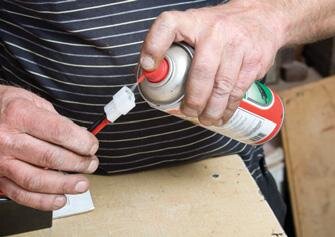
Inserting battery into bayonet
Plumber’s cap provides access
Sealing motor shaft end where flag sits
Tow hitch
We put on the tow hitch to attach the line to.
It fixes with a longer bolt and wing nut on the battery fitting. Everything is made with jigs so all the holes are very accurate therefore you won’t get any misalignment or holes that you need to file.
Keeping the kontiki on a straight line depends on where you attach the line on the tow hitch at the back. The tow hitch has a series of holes. With this model, if you need it to go straight out and there are no currents or side winds, you need to clip the line on about two holes to the left and it will go straight out.
If you want it to go to the left because maybe there are some rocks to one side, move the line one hole over. If you want it to go to the right, move to another hole and that will change the kontiki direction by about five or six degrees.
One of the mistakes people make is to use too heavy a line because then the side currents affect them more. Bigger isn’t always better. But there are lots of unknowns and you get used to a beach, the side currents and tides. When I get a chance, because I am working more and more on my kontikis in my spare time, I try to go to the west coast beaches.
There is excellent fishing at Raglan. The east coast beaches are good at certain times of the year, but I prefer the west because there is more opportunity and you never know what you are going to get—big kawhai, snapper.
With urethane, I seal on the nose cone and the O ring at the back that has the plumber’s cap and mount the flag which is held in a small cap on the end of the motor shaft. I put some urethane in there to just to block that hole to ensure no water gets in.
With the trace board holding the maximum 25 hooks allowed by law for a long line and the electric winch, you are ready to go.
For the electric winches, I use a mobility scooter motor on which I change the brush angle to run them up to 100 rpm on 12 volts. You want the line to come in fairly steadily. I make all my winches.
View fullsize
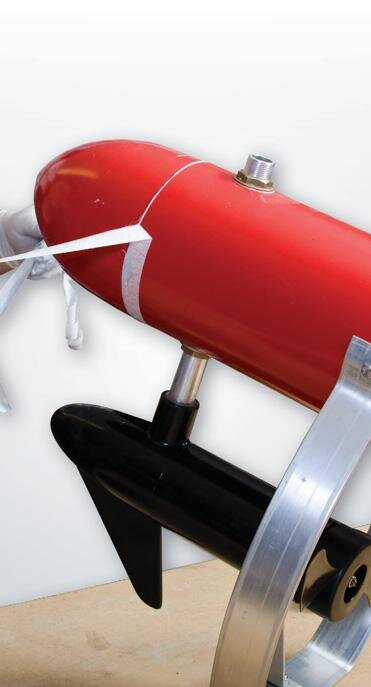
Turning winch drum
Kontiki finished and ready for fishing

